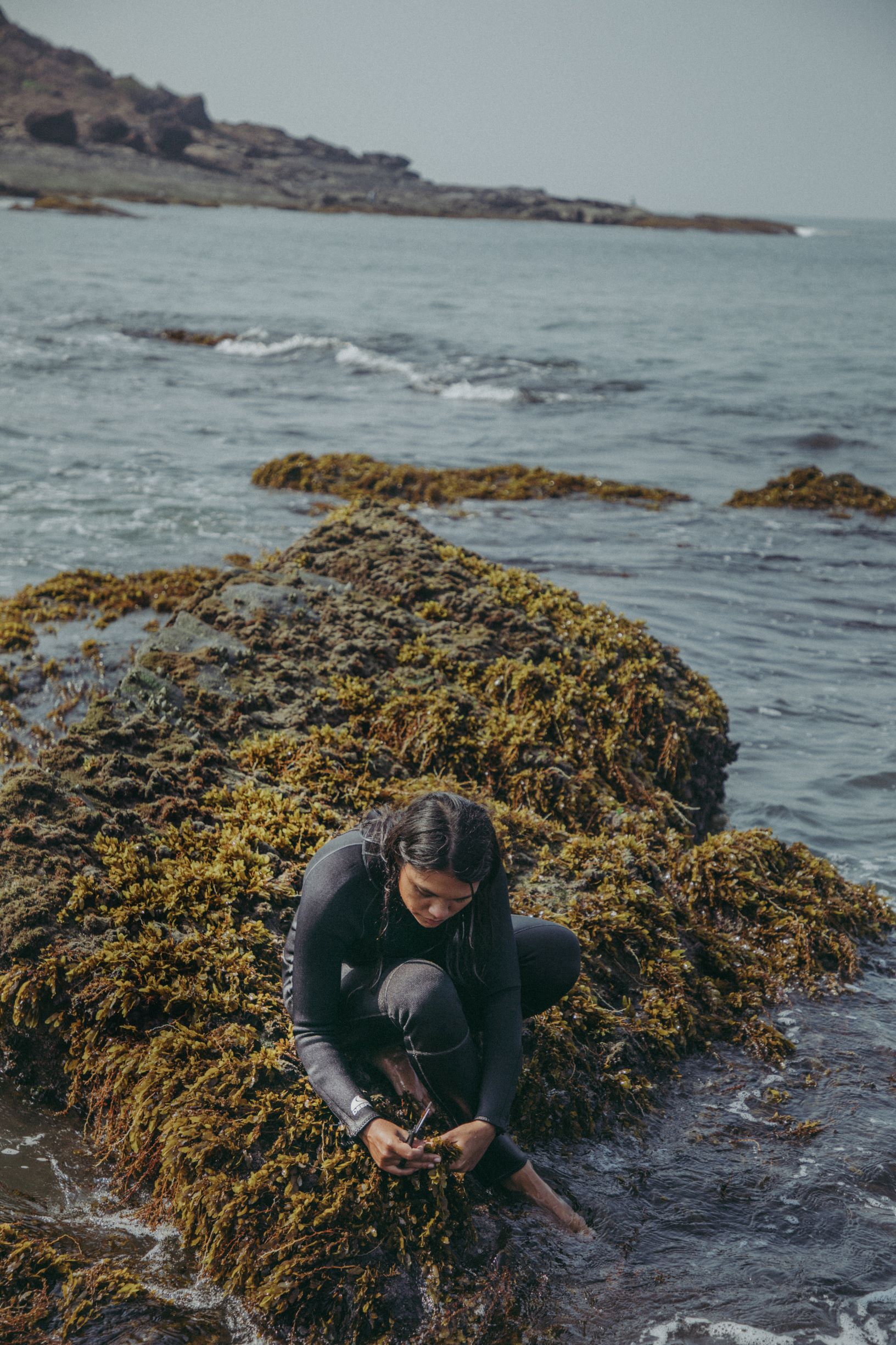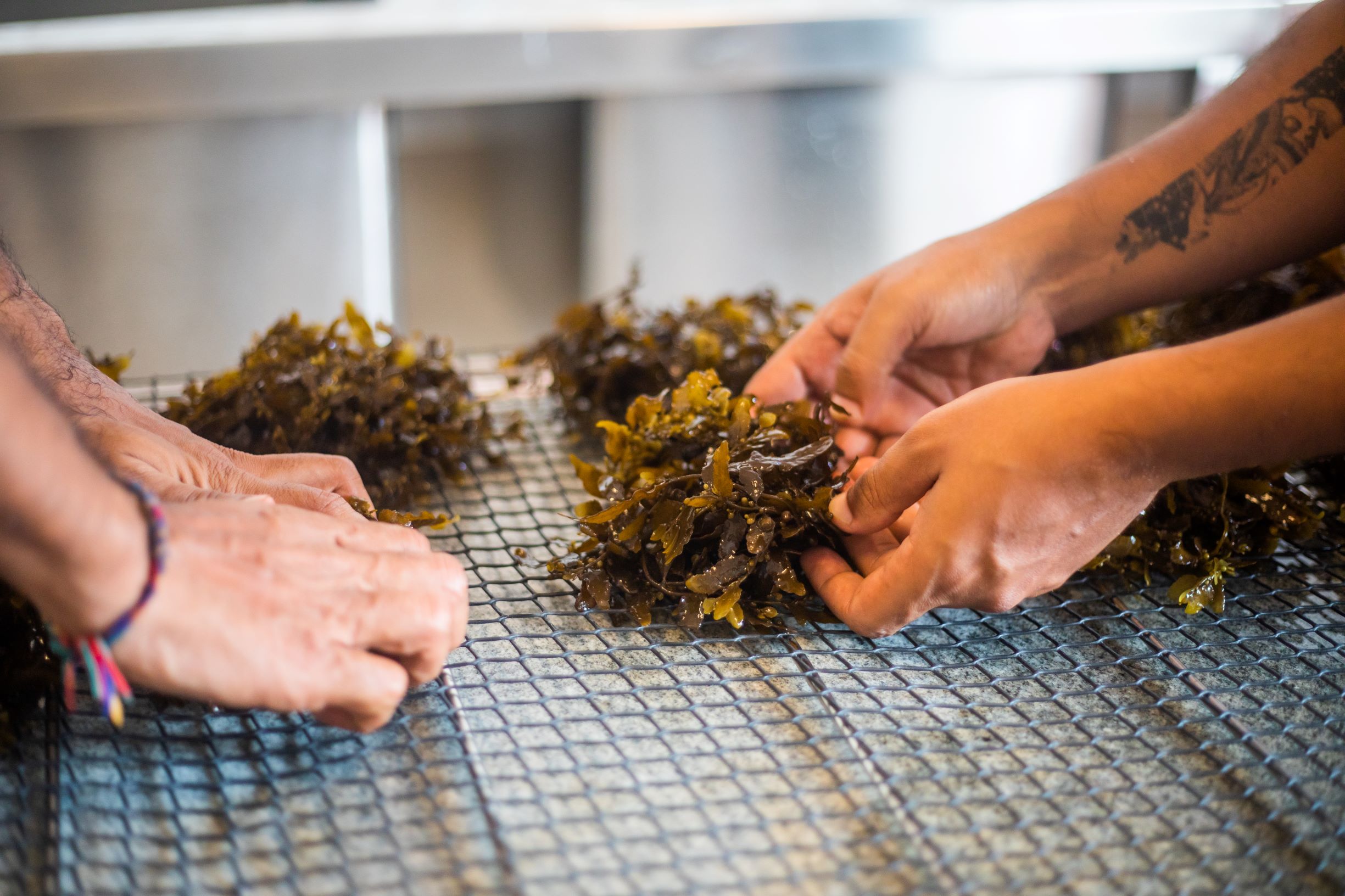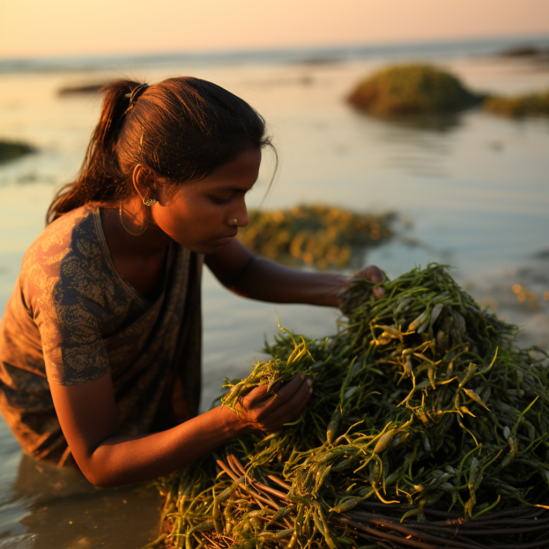A seaweed farm is a study in how to make a little go a long way – kindly, too.
A seaweed farm? Doesn’t seaweed grow in the sea? Yes, but that’s not all there is to it.
There is no one better in the country to tell us about this than Gabriella D’Cruz who has taken a deep dive into seaweed harvesting. For this story, enthucutlet spoke with her about what the seaweed future looks like, and what upscaling in the seaweed industry can mean.
An ecologist and academician-turned businesswoman, D’Cruz is the founder of The Good Ocean, an organisation that consciously harvests seaweed, and while doing so, secures the welfare of the indigenous communities that wild harvest it.
In her work with the ocean and its seaweed, D’Cruz focuses on the conservation of marine ecosystems while keeping “coastal economies, livelihoods, and those receptive to coastal communities” in mind. Her interests lie in engaging with people, and in being socially functional – so the idea of starting a seaweed harvesting venture seemed to hold water.
Situated in a calm bay, the raft floats according to the tides. “It looks like someone’s [screen] wallpaper,” says an amused D’Cruz. “It’s so ridiculously beautiful, with these floating beach rafts.”
The thing that drew her to seaweed farming is the already functioning seaweed industry in Tamil Nadu, which is mainly run by women. There, women take boats out, they free dive, and they hand harvest seaweed. But none of it is, or has been, as easy or romanticised as it sounds. Most of these women-seaweed farmers told D’Cruz that they would not want their daughters to work in such an industry. So, D’Cruz drove the change, highlighting the shift the industry needed by starting new seaweed supply chains from Goa.

What do we think a seaweed farm looks like? Do we imagine wavy blackish-green grass floating underwater along with gentle lapping tides, the sun shining brightly? D’Cruz lets us look below the surface.
It happens so that two years ago The Good Ocean and Nisha D’Souza (who runs a conservation consultancy in Goa) started a pilot seaweed farm in Goa as well as in Kumta, Karnataka. They grew Gracilaria, a native species of red seaweed. They set up three bamboo rafts (each five-feet square) with plastic drums underneath. The drums enabled the rafts to float, and anchored them to the sand with helical anchors. Not exactly what we’d imagined as the physics of a seaweed farm. (Until we got a glimpse of the Hollywood version in the movie Ticket to Paradise.)
Situated in a calm bay, the raft floats according to the tides. “It looks like someone’s [screen] wallpaper,” says an amused D’Cruz. “It’s so ridiculously beautiful, with these floating beach rafts.” But as these rafts stay afloat, it is hard to regulate their access. D’Cruz has dealt with various visitors: fishermen sitting on them to fish, sunbathing crabs, and resting seabirds. Seaweed and mussels grew on the ropes that were suspended from the bottom of the rafts. The seaweed farms were productive for a little while. However, the entire system had to be shelved because there was a disease outbreak, and there were no funds to study the infestation.
D’Cruz says a future seaweed farm would look like a multi-trophic system in its vision. It would have a line of research, IMTA or Integrated Multi-Trophic Aquaculture. It would dabble in different species growing in one area of the ocean. Think: a seaweed raft with mussels growing on it, and different kinds of shellfish growing at the bottom. It would also act as a fish breeding ground. A model like this is much more climate and economically resilient. In the sense that, when seaweed doesn’t grow in one season, you still have the mussels, different shellfish, and other fish, all thriving.
While growing seaweed, various factors such as the ocean’s unpredictability, disease outbreaks, and inadequate research come into play and there is not enough of this research, or policies set in place to set-up a yielding business.
Seaweed farming is an industry that sells its goods very cheaply compared to the value it takes to extract them. Often the quality of the seaweed is not ideal. D’Cruz insists that there is a combination of factors that play into this problem. One is the lack of academic research on extracting seaweed, or working with seaweed in general. This is accompanied by a lack of professionals who have a tactful approach towards seaweed to generate this academic research. Second, there are policies that need to be implemented to address existing challenges such as over-harvesting, and unethical trade practices.
All of this is only achievable when research-driven academia combines forces with the government to identify which resources are required. All of which makes seaweed farming, harvesting and regulation, an expensive endeavour.

D’Cruz suggests a solution: making seaweed into a high-value industry which extracts a smaller volume of better-quality produce at a higher price. This in turn, will be more lucrative for the seaweed farming community, and their product will be more appreciated.
This is what The Good Ocean is working on. “We are wild harvesting at the moment, and we supply to a very niche market,” D’Cruz says. “However, we are very careful with how we wild harvest this seaweed.”
She breaks the process down for us. When D’Cruz met the community of 700 wild-harvesting women, she realised that they would bulk sell different, uncategorised species of seaweed to middlemen who were a part of the industry supply chain. Together, they would set prices, following which, the middlemen would sell it to the agar agar and carrageenan industry in Madurai, a node for other industries. Further down, these processing factories would sell a lot of these gelling agents to pharma, agricultural, and food industries, or anyone who used seaweed as a gel.
Seaweed is used in anti-cancer drugs, regenerative skincare, gut health, and can also be used as an iodine nutrient. D’Cruz urges us to look at seaweed through a multifunctional lens, but also brings up a very relevant question: How can this industry evolve such that it’s not overly extractive?
In Tamil Nadu, over extraction is rife, she says, so a large number of seaweed species are dying, there’s a lot of stress on the environment, and therefore, many seaweed businesses are shutting shop. So, the first thing to ensure while starting a seaweed business, is to avoid over-harvesting.
D’Cruz insists that the only way to do this is to develop a regenerative farming business model that works for seaweed. For this, it is imperative to plan how much we want to supply, and grow accordingly.
While growing seaweed, various factors such as the ocean’s unpredictability, disease outbreaks, and inadequate research come into play and there is not enough of this research, or policies set in place to set-up a yielding business.

D’Cruz and her team at The Good Ocean are working to ethically grow seaweed on their own farms, or to collaborate with people who own farms. This way, seaweed consumers will use farmed produce instead of wild harvested. Through The Good Ocean, D’Cruz wants to redefine what upscaling means in farming. With the trend towards monocultures, everything becomes genetically identical – if aquaculture follows this model, it would be grim – a disaster, indeed. Currently, a lot of seaweed is wild harvested in vast quantities and sold at cheap rates to biofertiliser companies. The Good Ocean doesn’t agree with this approach. D’Cruz believes it only creates waste. The potential of the harvest is not realised extensively, other than to produce biofertiliser.
Instead, The Good Ocean harvests a smaller quantity and processes it to its core value, making it nutritious. It does this by running a food company that processes the seaweed into a nourishing, delectable food product. As an example: the focus of The Good Ocean’s current harvest is on Sargassum, one of Goa’s locally abundant species. With a flavour profile akin to the Japanese seaweed kombu, Sargassum can be efficiently used to make stocks and dashi in its dried form. Its rehydrated version makes a scrumptious addition to salads. D’Cruz’s locally and ethically harvested seaweed is now picked up by many restaurants (such as Makutsu in Panjim, Goa). It adds versatility to many cuisines.
In this way, D’Cruz and The Good Ocean show us how to use a little produce that is both high quality and ethically sourced. Through their model, they show us how farming can be upscaled responsibly, with respect for both natural resources and for farmers.

Gabriella D’Cruz is a marine conservationist with a Master’s in Biodiversity Conservation and Management from the University of Oxford. She runs India’s first seaweed food company called The Good Ocean that selectively harvests local seaweed in Goa and supplies it to chefs and restaurants across the country. She lives in Goa with her dog Nori.

